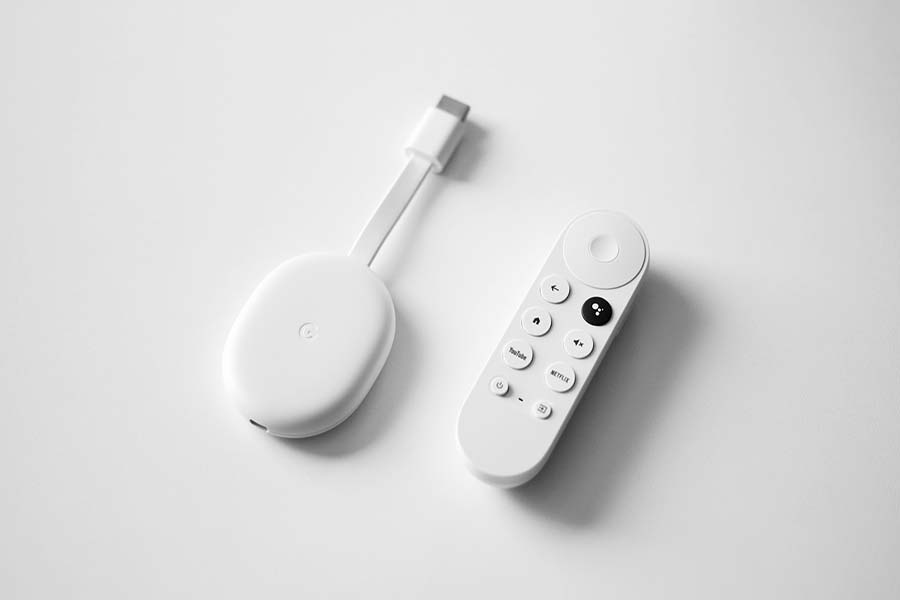
Chromecast has revolutionized how we consume digital content, enabling us to stream movies, videos, and music to our TVs with a simple button. Yet, as we delve into the world of this versatile streaming device, a fundamental question arises: Does Chromecast need Wi-Fi? In this comprehensive guide, we will explore the intricacies of Chromecast connectivity, unraveling the role of Wi-Fi, examining alternative options, and shedding light on offline casting possibilities. Whether you’re a seasoned Chromecast user or just starting, understanding how Chromecast interacts with Wi-Fi is essential to ensure a seamless and enjoyable streaming experience.
Does Chromecast need Wi-Fi?
Yes, Chromecast primarily relies on a Wi-Fi connection to function effectively. It is designed to stream content from your mobile devices or computer to your TV over Wi-Fi. While alternative connectivity options like Guest Mode and Ethernet adapters exist, a stable Wi-Fi connection is the most common and recommended way to use Chromecast for streaming and casting content to your television.
Importance Of Understanding Chromecast Connectivity Options
Optimizing Performance: Knowing the various connectivity options allows users to select the most suitable one for their circumstances. This helps achieve the best possible performance, whether streaming high-definition videos or casting content without interruptions.
Troubleshooting: When issues arise, understanding connectivity options can aid in diagnosing and resolving problems. Users can pinpoint whether the issue lies with their Wi-Fi network, the Chromecast device, or the casting device, making troubleshooting more efficient.
Compatibility: Different Chromecast models and casting devices may have varying compatibility with connectivity options. By understanding these options, users can ensure their devices work seamlessly together, preventing potential compatibility issues.
Privacy and Security: Knowledge of Chromecast connectivity options allows users to make informed decisions about their network security. It helps users understand the risks and benefits of connecting their Chromecast to different networks, especially public Wi-Fi networks.
Convenience: Some connectivity options, such as Ethernet adapters or offline casting, can provide added convenience or flexibility in certain situations. Understanding these options enables users to make the most of their Chromecast device and adapt it to their needs.
Data Usage: Depending on the connectivity option chosen, data usage can vary significantly. Understanding this aspect helps users manage their data consumption effectively, especially when dealing with mobile hotspot connections or limited data plans.
Future Upgrades: As technology evolves, Chromecast and its connectivity options may also change. Staying informed about these options ensures users can adapt to new features and improvements, enhancing their overall Chromecast experience.
When Does Chromecast Need Wi-Fi?
Chromecast primarily requires a Wi-Fi connection in several critical scenarios:
- Initial Setup: You need a Wi-Fi network to set up your Chromecast device for the first time. During setup, connect your Chromecast to your Wi-Fi network, configure settings, and link it to your Google account.
- Content Streaming: The primary function of Chromecast is to stream content from your mobile devices (smartphones or tablets), computers, or the web to your TV. To stream content, your Chromecast device and the casting device (such as a smartphone or computer) must be connected to the same Wi-Fi network.
- Casting from Apps: Most apps that support Chromecast use Wi-Fi to cast content from your device to your TV. This includes popular streaming services like Netflix, YouTube, and Hulu. The casting device communicates with the Chromecast over Wi-Fi to transmit the content.
- Screen Mirroring: When you mirror your device’s screen to your TV using Chromecast, it relies on Wi-Fi for this feature to work. Your screen’s content is mirrored in real-time over the Wi-Fi network to your TV.
- Accessing Online Content: Many apps and services require an internet connection to access and stream content. Chromecast relies on Wi-Fi to access online content, even if it doesn’t come from your casting device (e.g., streaming YouTube videos directly online).
Advantages Of Using Wi-Fi For Chromecast
Using Wi-Fi for Chromecast offers several advantages, providing a seamless and convenient streaming experience. Here are the key benefits of using Wi-Fi with Chromecast:
High-Speed Data Transfer:
Wi-Fi provides fast and reliable data transfer, making it ideal for streaming high-definition videos, music, and other content to your TV. This ensures smooth playback without buffering or interruptions.
Wireless Convenience:
Wi-Fi eliminates the need for physical cables between your casting device and your TV. This wireless connectivity simplifies setup and allows for greater flexibility in device placement.
Broad Compatibility:
Most modern devices, including smartphones, tablets, laptops, and computers, have Wi-Fi capabilities. Chromecast is compatible with a wide range of these devices, making it accessible to many users.
Multi-Device Support:
Wi-Fi connects multiple devices to the same Chromecast simultaneously. This enables a collaborative or social viewing experience where different users can cast their content on the same TV.
Remote Control Integration:
Many casting apps and services include remote control features, allowing you to control playback, volume, and other settings from your casting device directly. Wi-Fi connectivity facilitates seamless communication between the casting device and Chromecast.
Stable and Consistent Connection:
Wi-Fi networks are designed for stable and consistent connections, reducing the likelihood of disruptions during streaming. This ensures a reliable viewing experience without interruptions.
Easy Updates and Firmware Upgrades:
Chromecast devices receive software updates and upgrades over Wi-Fi. Without manual intervention, your device can stay updated with the latest features and improvements.
Seamless Integration:
Chromecast seamlessly integrates with popular streaming apps like Netflix, YouTube, Hulu, Spotify, and many more, making it easy to cast content directly from these apps using Wi-Fi.
Future-Proofing:
As technology evolves, Wi-Fi improves, offering faster speeds, greater coverage, and enhanced capabilities. Using Wi-Fi with Chromecast ensures your device can take advantage of these advancements.
Alternative Connectivity Options
Chromecast offers a few alternative connectivity options for users who may not have access to a traditional Wi-Fi network or want to use different methods of casting and streaming:
Guest Mode allows users to access a Chromecast device without being connected to the same Wi-Fi network. It uses ultrasonic audio and a PIN code to connect the casting device and the Chromecast temporarily. This is useful when guests want to cast content to your TV but must be added to your Wi-Fi network.
If you’re near a Chromecast device and have Bluetooth enabled on your casting device, you can use Nearby Mode. It allows a direct Bluetooth connection to the Chromecast, enabling casting without a Wi-Fi network. However, the content may still require an internet connection for streaming.
Chromecast devices typically connect to Wi-Fi, but you can purchase an Ethernet adapter (sold separately) for some Chromecast models. This adapter lets you connect your Chromecast directly to your router using an Ethernet cable, providing a more stable and reliable internet connection, especially in areas with weak Wi-Fi signals.
If you have a smartphone or mobile hotspot with an active data plan, you can set up a mobile hotspot and connect your Chromecast. This allows you to use your mobile data for internet connectivity when Wi-Fi is unavailable. Remember that this may consume mobile data, so be mindful of data usage.
Some apps and services offer the option to download content for offline viewing or casting. While this doesn’t require a real-time internet connection, you’ll need an initial connection to download the content. Once downloaded, you can cast it to your Chromecast without continuous internet access.
Conclusion
Understanding Chromecast connectivity options is crucial for getting the most out of this versatile streaming device. While Chromecast primarily relies on Wi-Fi for seamless casting and streaming, it offers alternative connectivity options like Guest Mode, Nearby Mode, Ethernet adapters, mobile hotspots, and offline casting to accommodate various scenarios and preferences. By grasping the nuances of these options, users can optimize performance, troubleshoot issues effectively, and tailor their Chromecast experience to their specific needs. Whether streaming content from a mobile device, mirroring a screen, or accessing online services, having a firm grasp of Chromecast connectivity options empowers users to enjoy a seamless and enjoyable streaming experience.


